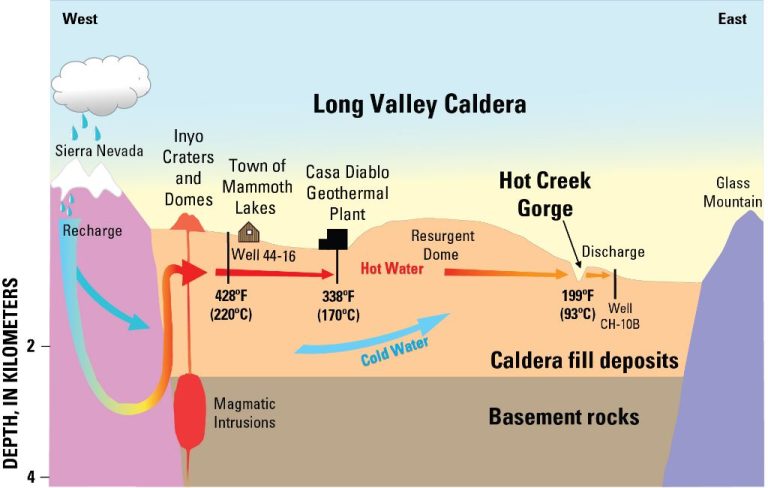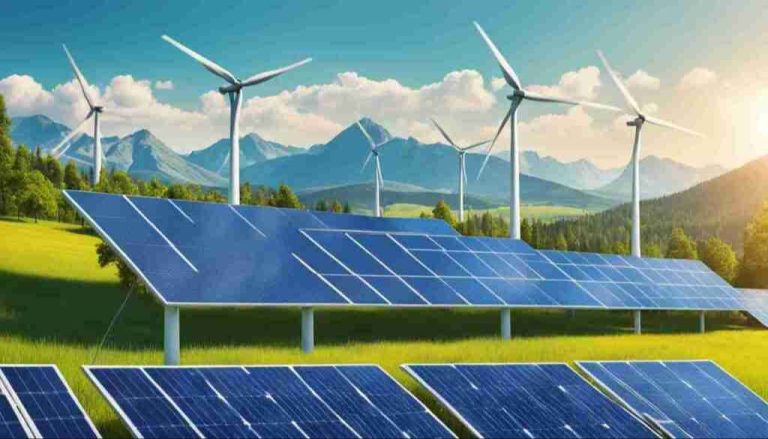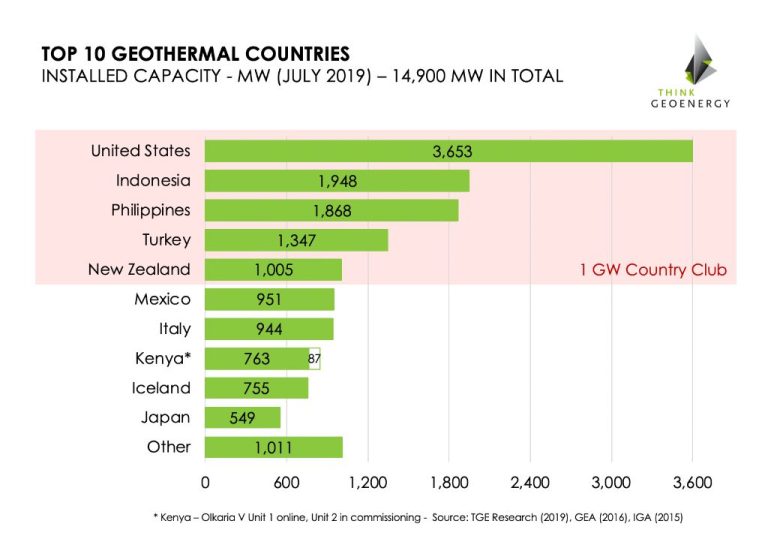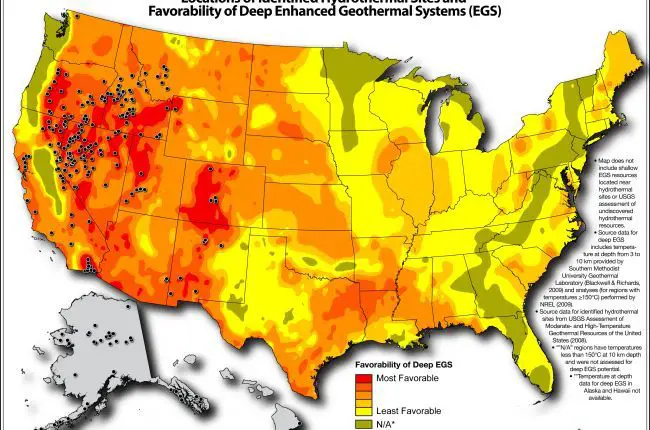Geothermal Energy Sustainability: Evaluating Environmental Implications
Geothermal energy is heat derived from the Earth. It is a clean, renewable source of energy that utilizes the Earth’s natural heat in the form of hot water or steam reservoirs found miles beneath the Earth’s surface. Geothermal energy can be accessed by drilling water or steam wells in a process similar to drilling for oil and natural gas.
Once accessed, the hot water or steam can be brought to the surface and used directly for heating purposes, or to power steam turbines to generate electricity. Geothermal power plants are generally built where geothermal reservoirs are located within a mile or two of the Earth’s surface.
Geothermal energy has the potential to provide a secure, sustainable energy source that reduces reliance on fossil fuels. While geothermal energy currently provides only a small fraction of the world’s energy needs, advocates believe it has enormous undeveloped potential as a renewable energy source.
Geothermal Power Generation
Geothermal power plants generate electricity by tapping into underground reservoirs of hot water and steam. There are three main types of geothermal power plants: dry steam, flash steam, and binary cycle.
Dry steam plants are the oldest and simplest type of geothermal power plant. They utilize natural steam from a geothermal reservoir to directly turn electricity-generating turbines. The first known dry steam plant was built in Italy in 1904. This technology requires a site with naturally occurring dry steam.
Flash steam plants are the most common geothermal power plant today. They pull hot water from a geothermal reservoir up through production wells, then route it into a tank at lower pressure, causing the water to boil rapidly or “flash” into steam. This steam is then used to turn turbines and generate electricity. Any water or condensed steam is injected back into the reservoir through injection wells.
Binary cycle plants differ in that they maintain the geothermal fluid in a closed loop system. Hot water from production wells is passed through a heat exchanger which heats a separate organic compound with a low boiling point, causing it to vaporize. This vapor turns the turbines to generate power. The water is then injected back into the reservoir. Binary cycle plants emit very few greenhouse gases.
Enhanced geothermal systems (EGS) are a developing technology that pumps water into hot rock reservoirs to create an artificial geothermal system. The injected water fractures the rock and becomes heated, producing steam to generate electricity through adjacent production wells. EGS has the potential to greatly expand geothermal energy production.
Global Geothermal Power Capacity
Geothermal energy has seen steady growth as a renewable power source over the past decades. Currently, there is approximately 14 gigawatts of installed global geothermal power capacity across 26 different countries. The leading countries utilizing geothermal power include the United States, Indonesia, and the Philippines. Growth is expected to continue, especially across Southeast Asia and parts of Africa and South America which have substantial untapped geothermal resources.
The top geothermal electricity producers are Indonesia and the United States. Indonesia has over 2.1 gigawatts of installed capacity, due to its location along the geologically active “Ring of Fire.” The United States generates the second highest amount of geothermal electricity in the world, with over 2.5 gigawatts of installed capacity, predominantly located in the western states of California, Nevada, Utah, and Hawaii.
Emerging markets like Turkey, Kenya, Mexico, Chile and Central American countries are rapidly developing geothermal power plants. Significant potential exists across these regions to further expand geothermal energy production through new project development and technological improvements that make previously unviable sites accessible.
Environmental Benefits
Geothermal power generation has several key environmental benefits compared to conventional fossil fuel power plants. Most significantly, geothermal plants emit very low levels of greenhouse gases and air pollutants. The steam and hot water used in geothermal plants contains negligible amounts of sulfur dioxide, nitrogen oxides, and carbon dioxide compared to coal and natural gas plants. According to estimates, geothermal plants emit less than 5% of the carbon dioxide of a coal-fired plant per kilowatt-hour. This makes geothermal an attractive renewable baseload energy source to help mitigate climate change.
Additionally, geothermal power utilizes land much more efficiently than other renewable energy sources. While solar and wind farms can require vast land areas to generate equivalent capacity to a geothermal plant, geothermal developments use less than 1 square mile per 1000 megawatts generated. The actual facility footprint is small, allowing the remaining land to be used for other purposes like agriculture. Geothermal’s modest land requirements make it especially suitable for high density population areas.
Water Usage Concerns
One of the drawbacks associated with geothermal power is its high water usage, especially when compared with other renewable energy sources like solar and wind. Geothermal plants require large volumes of water for drilling, pressure maintenance, and cooling purposes. This places strain on water resources in arid regions where geothermal fields are located.
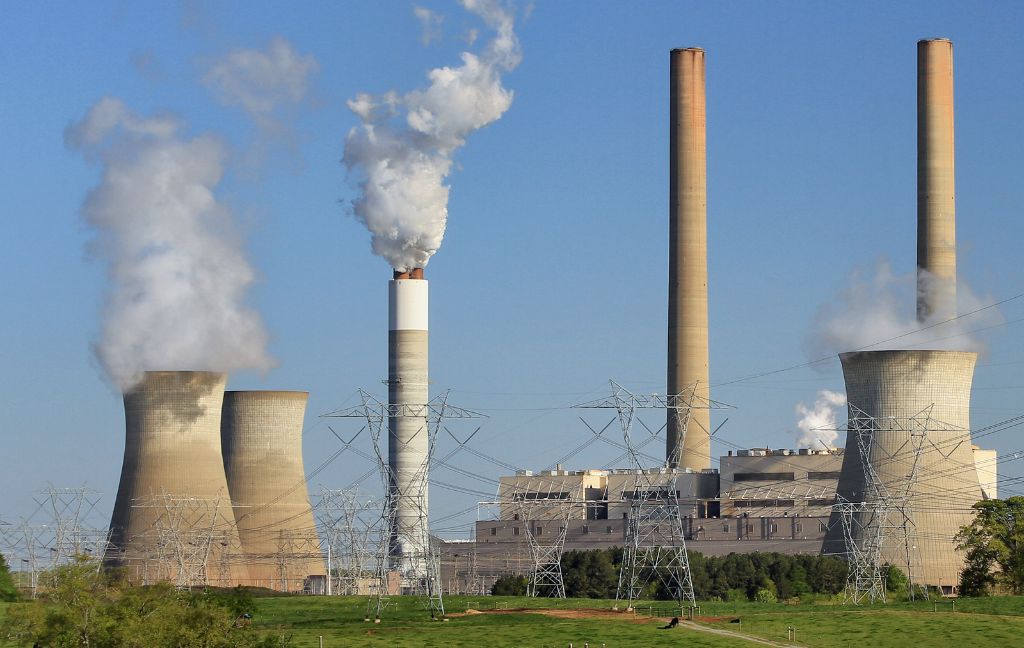
During the drilling and development of a geothermal reservoir, significant amounts of water are required. Water is used to lubricate and cool the drill bit as well as carry rock cuttings to the surface. Once the geothermal well is productive, water is continuously pumped down into the reservoir to maintain pressure and productivity. Typically, 3-10 million gallons of water are required per well per year.
Once the geothermal steam or hot water reaches the power plant, it needs to be cooled before being injected back into the reservoir. Wet cooling towers, which allow the geothermal fluid to come into contact with air, lose substantial amounts of water through evaporation. On average, geothermal power plants consume around 1800 gallons of freshwater per megawatt-hour generated. This is much higher compared to solar photovoltaic or wind power.
Excessive water withdrawal for geothermal use could negatively impact surface water resources, especially in arid regions where water scarcity is already an issue. Careful aquifer management and use of alternative cooling technologies could help mitigate the high water demands.
Induced Seismicity
The injection of fluid into geothermal reservoirs carries the risk of inducing small earthquakes through pressure changes and lubricating faults. While most induced seismic events are minor, larger earthquakes can potentially occur and cause damage if injection activities are not carefully monitored and controlled.
The largest induced earthquake attributed to geothermal operations occurred in Basel, Switzerland in 2006, measuring 3.4 on the moment magnitude scale. This resulted in widespread concern over seismic risk that led to the cancellation of the Basel enhanced geothermal project.
However, with proper seismic monitoring networks and traffic light systems that trigger controlled response protocols, induced seismicity can be mitigated. Setting conservative thresholds for maximum magnitude and seismic energy release based on local geology allows operators to modify injection protocols when warning signs are detected.
Ongoing research into geomechanical modeling, machine learning algorithms, and microseismic imaging helps improve understanding of induced seismicity risks. With rigorous safeguards and prudent operating practices, enhanced geothermal projects can stimulate seismicity within safe limits.
Land Subsidence
One potential environmental impact of geothermal energy production is land subsidence, which is the gradual sinking or settling of the land surface. This occurs when geothermal fluids are extracted from underground reservoirs faster than they can be replenished naturally. The continuous withdrawal of geothermal fluids causes pores and fractures in the reservoir rocks to compact, leading to subsidence at the surface.
Subsidence is monitored closely at geothermal power plants to avoid detrimental effects. If severe enough, subsidence can damage infrastructure like roads, pipelines, and buildings. Subsidence surveys utilizing leveling and GPS are conducted to detect ground movement trends. Reservoir modeling also helps predict future subsidence risks.
To prevent subsidence, the rate of geothermal fluid extraction is carefully controlled. Injection wells are used to return spent geothermal fluids back to reservoirs to maintain pressure levels. Enhanced geothermal systems that create fractures in hot dry rock also minimize subsidence. With proper monitoring and sustainable extraction rates, subsidence can be minimized to negligible levels.
Hydrothermal Alteration
Geothermal power plants rely on hydrothermal fluid reservoirs located deep underground. The high-temperature water and steam extracted from these reservoirs to generate electricity can chemically alter the mineral composition of surrounding rock through a process known as hydrothermal alteration.
As hot hydrothermal fluids circulate through rock fractures, they interact with and dissolve minerals, later depositing them elsewhere as new mineral phases. This alters the chemical makeup of the rocks near geothermal reservoirs. Hydrothermal alteration often produces clay minerals like kaolinite and illite, as well as silica phases like quartz.
One concern with hydrothermal alteration is that it can potentially mobilize hazardous elements like arsenic, antimony and mercury that are naturally present in rock. If these contaminants enter geothermal fluids, they could be released into the environment or concentrated in scale deposits inside geothermal equipment. Careful monitoring and management strategies are necessary to prevent harmful accumulation of toxic elements.
Additionally, the changes in rock properties caused by hydrothermal alteration can impact underground fluid flow, temperature, and pressure over time. This needs to be accounted for in reservoir modeling and management to ensure long-term sustainability of geothermal systems.
Sustainable Development
As with any energy technology, best practices must be followed to ensure geothermal energy production is sustainable and responsible. There are several ways geothermal projects can be developed sustainably:
Site Selection – Careful site selection and environmental impact assessments help avoid projects in sensitive ecosystems or critical habitat areas. Favoring sites with existing infrastructure also minimizes habitat disruption.
Water Management – Using hybrid wet/dry cooling systems, zero liquid discharge systems, and water reinjection processes can dramatically reduce freshwater consumption.
Induced Seismicity Mitigation – Implementing traffic light warning systems, adjusting injection protocols, and establishing community engagement plans can reduce seismic risks.
Emissions Reduction – Utilizing abatement technology like sulfur scrubbers and selecting sites with negligible non-condensable gases can minimize air emissions.
Habitat Restoration – Replanting native vegetation and implementing biodiversity plans can help restore any disturbed areas after project completion.
Community Engagement – Open communication and benefit sharing with local communities creates goodwill and allows issues to be proactively addressed.
Regulatory Compliance – Following all applicable environmental laws and regulations, and undergoing regular monitoring and inspections ensures responsible management.
By incorporating these sustainable best practices into project development, operation, and decommissioning, the geothermal industry can continue expanding while safeguarding the environment.
Future Outlook
The future of geothermal energy looks promising, with projections for strong growth in the coming decades. According to the International Renewable Energy Agency, global geothermal power generation capacity could grow 147% from 2015 to 2030 under their accelerated renewable energy scenario.
Several factors are driving this projected growth. First, geothermal technology continues to improve, lowering costs and making it viable in more locations. Enhanced geothermal systems (EGS) in particular could greatly expand geothermal potential by accessing hot rock resources through hydraulic fracturing. Second, geothermal provides constant baseload power that complements intermittent renewables like solar and wind. Its ability to provide stable power around the clock makes it attractive as more renewable energy comes online globally.
Many countries are ramping up investments in geothermal to play a larger role in their renewable energy transitions. The International Energy Agency predicts geothermal could provide 3.5% of global electricity by 2040 in their sustainable development scenario. While a small share, this would still represent significant absolute growth for geothermal generation. Realizing this potential will require supportive policies and sufficient investment to tap into the vast geothermal resources available worldwide.

